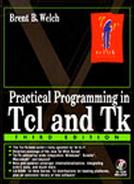Nested Namespaces
Namespaces can be nested inside other namespaces. Example 14-3 shows three namespaces that have their own specific variable x. The fully qualified names for these variables are ::foo::x, ::bar::x, and ::bar::foo::x.
Example 14-3 Nested namespaces.
namespace eval foo {
variable x 1 ;# ::foo::x
}
namespace eval bar {
variable x 2 ;# ::bar::x
namespace foo {
variable x 3 ;# ::bar::foo::x
}
puts $foo::x ;# prints 3
}
puts $foo::x ;# prints 1
|
 | Partially qualified names can refer to two different objects. |
In Example 14-3 the partially qualified name foo::x can reference one of two variables depending on the current namespace. From the global scope the name foo::x refers to the namespace variable x inside ::foo. From the ::bar namespace, foo::x refers to the variable x inside ::bar::foo.
If you want to unambiguously name a variable in the current namespace, you have two choices. The simplest is to bring the variable into scope with the variable command:
variable x set x something
If you need to give out the name of the variable, then you have two choices. The most general solution is to use the namespace current command to create a fully qualified name:
trace variable [namespace current]::x r
[namespace current]::traceproc
However, it is simpler to just explicitly write out the namespace as in:
trace variable ::myname::x r ::myname::traceproc
The drawback of this approach is that it litters your code with references to ::myname::, which might be subject to change during program development.
